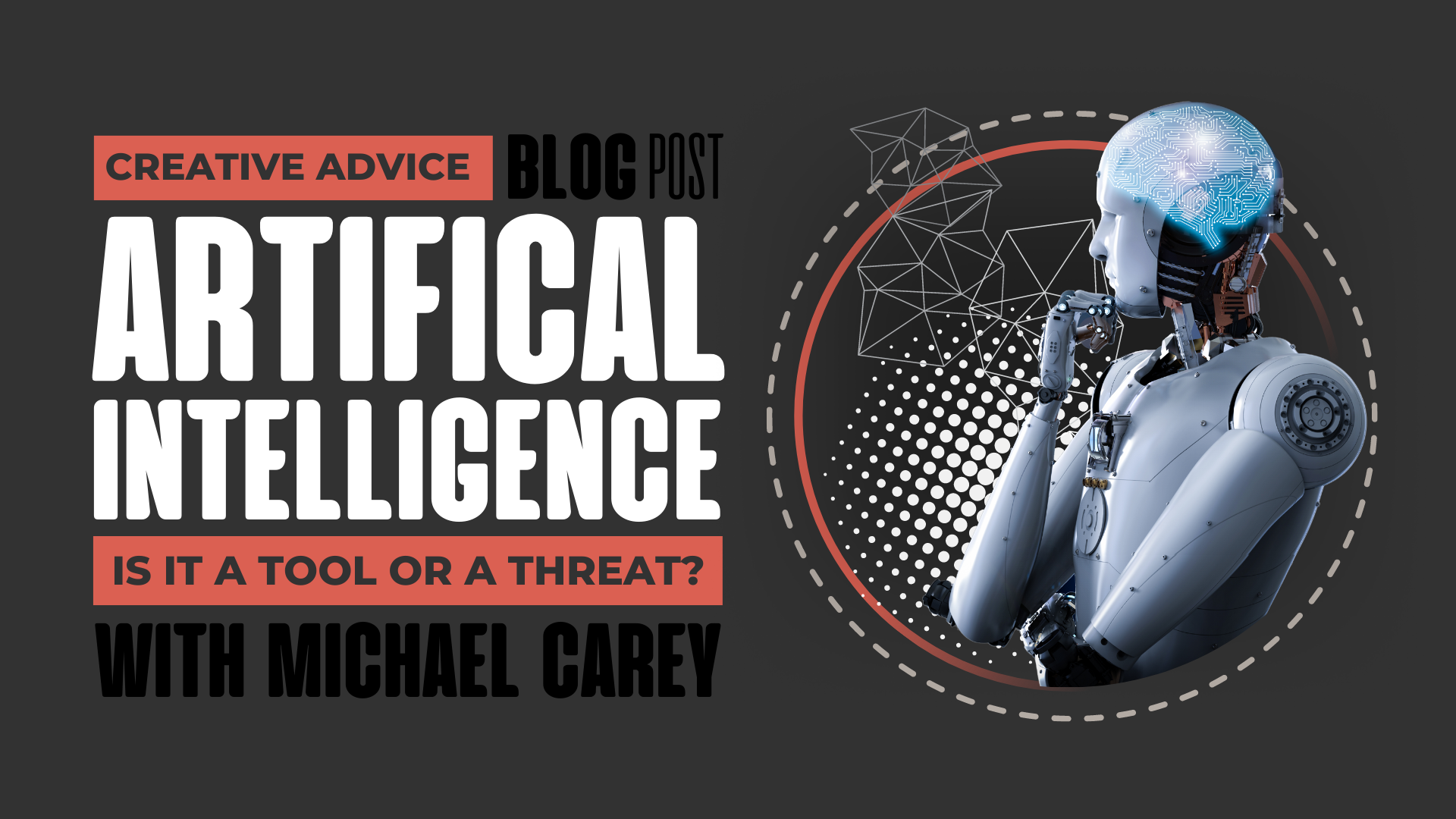ARTIFICIAL INTELLIGENCE: IS IT A TOOL OR A THREAT?
Artificial intelligence appears to be everywhere these days. In this article, I will take a dive into AI and its place in Graphic design. Is it a tool or a threat?
While there is huge potential for the use of AI in graphic design, it’s important to consider the potential downsides and challenges that come with its implementation. Should we be worried that AI is going to replace us? Will we become over-reliant on AI-generated designs? Could this all lead to a lack of originality and creativity in the design industry? Or will it become another tool in the Graphic designer’s tool kit?
AI has made remarkable strides in various industries in recent years. The graphic design industry is no exception. It has the potential to revolutionise the way designers create designs and manage their workflow. The technology’s growth and impact have been so significant that it is no longer a matter of whether AI will change the graphic design industry but when and by how much?
One of the potential benefits of AI is the automation of repetitive tasks. This would allow designers to focus more on creating, experimenting, and bringing their unique perspective to the design. In practice, this sounds great! However, it’s important designers stay ahead of the curve and don’t become over-reliant on AI. As we may see ourselves getting replaced.
One must worry that as AI continues to develop, it may become more advanced and better equipped to create visuals than human designers are. This leads to a fear that the role of the designer will become obsolete, or significantly reduced, as AI takes over more creative tasks. AI could become the go-to option for many clients, reducing the demand for human designers.
For instance, AI bots such as DALL.E can already generate amazing concept art. Other software can also create layouts, colour schemes, and font choices in a matter of seconds. It can also produce designs and prototypes for websites, logos, and marketing materials, among other things. While this might seem threatening one must remember that AI is not a replacement for human creativity and it’s important for designers to understand its limitations.
It is important for us to make AI a tool rather than a replacement. By understanding the strengths and limitations of AI and using it to augment our own skills and insights. AI doesn’t have to be our competition but another tool in our kit that we can use to create better designs and user experiences for their clients.
Where I see AI going in graphic design is towards a more collaborative approach. As AI continues to evolve, it will become more integrated with our existing workflow and software. This will mean designers work seamlessly with AI-generated designs. This integration will allow designers to leverage the benefits of AI without compromising our creative vision. AI will likely become more sophisticated in analysing data, allowing it to create more personalised designs. It’s going to become critical that we as designers keep on top of this and continue to cater to the specific needs of their clients.
In conclusion, AI is rapidly changing the graphic design industry, and its impact is only set to increase. Its ability to automate repetitive tasks, improve accessibility, and create unique designs is just the beginning of what AI can do in graphic design. The potential of AI in graphic design is vast, and its future looks promising. However, it’s important to ensure that AI does not replace designers. Instead, it should be used to help them streamline their work and bring their creative vision to life. The future of AI in graphic design is exciting, and I can’t wait to see what designers and developers will create with this powerful technology.

